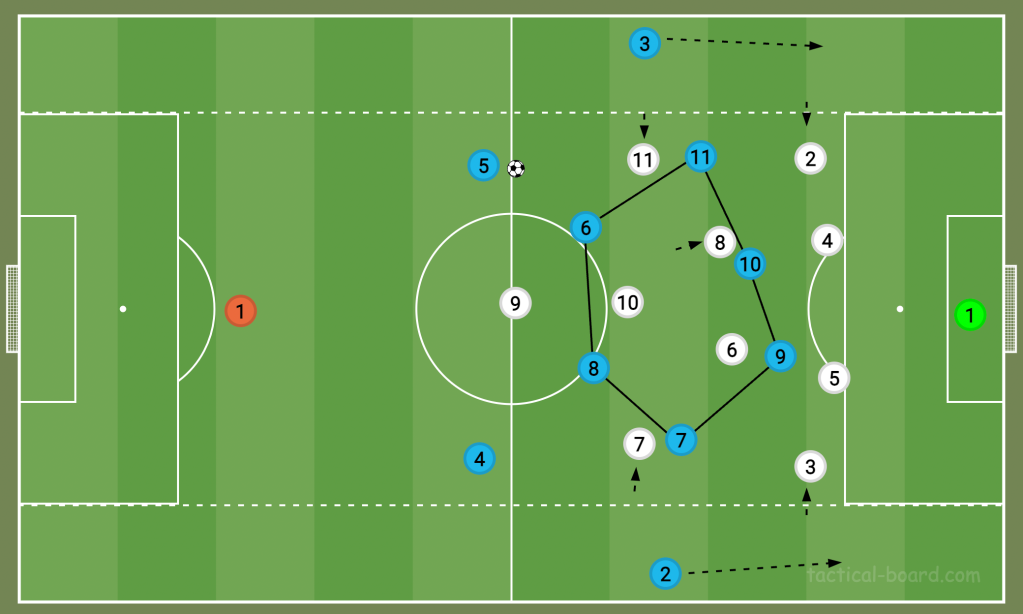The 4-4-2 was the first formation of the modern era, born in Brazil during the 1950s. However, the shape as we know it was largely abandoned by 2010, and replaced with newer, more fluid formations like the 4-2-3-1 and 4-3-3. Teams were beginning to obsess over possession — and the 4-4-2 only offered two central midfielders. It was considered too rigid and flat to create chances.
As teams became more fluid in-game, changing from one formation to another seamlessly, the 4-4-2 returned merely for defending and was used only as an out-of-possession shape by many sides. This is because, defensively, the 4-4-2 offers good coverage over the whole pitch both horizontally and vertically, and because teams were able to use the two wide men within it to defend two-v-one on the flank against opposition wingers.
However, recently the 4-4-2 has made an unforeseen resurgence and has been heavily adopted by managers like Unai Emery, during his time at Villarreal and now at Aston Villa, and Diego Simeone with Atlético Madrid. Argentina just won the World Cup playing with the new 4-4-2, which no one would have expected four years ago.
The old-fashioned 4-4-2 has evolved such that the wide midfielders now barely qualify as wide players at all. They spend the majority of their time in the inside channels, the half-spaces. This is to compensate for two things.

Firstly, the absence of a No10 player just behind the strikers, brought about by world football’s desire to wave goodbye to No10s altogether for the time being. ‘Zone 14’ (as shown by the white box), where the No10 traditionally does their best work, is deliberately kept vacant by attacking teams now. It’s so that various different players can now make runs into this zone from outside without being marked.
Secondly, to accommodate the modern-day full-back. Full-backs these days have to be capable of bombing up the pitch to create chances as well as defend their goal.
Having inverted wingers also means the attacking team is now in a six-v-five overload by default, and the defending team’s full-backs have no one to mark.

The genius here is that, by coaches reacting to this and pushing their full-backs high to cancel out the overload, it leaves the two centre-backs to cover the width of the pitch and defend against third-man runs from forwards.

With overloads made so easily in central areas, defending teams tend to squeeze centrally in response, leaving the wide lanes free for full-backs to advance into. It’s worth noting that the full-backs must be very willing runners in this system, given its central focus.

The way Aston Villa and Argentina play shows how easily a 4-4-2 can transition into other formations. The black and white arrows show the two ways to move into a 4-3-3, and the orange arrows highlight how moving one full-back up can make 3-5-2. This isn’t unique to the new iteration. Throughout history, what has ostensibly been a 4-4-2 has looked more reminiscent of other shapes in practice.

As this new formation spreads worldwide, it will be picked up by teams who already defend with the traditional 4-4-2. Why? Well, think about how easy defensive transitions will be. They won’t have to morph from 4-3-3 to 4-4-2, as some teams currently do. It will be simple and easy to coach. Managers whose team struggles in transition will adopt the style to overcome this issue.
Reborn in Spain, Villarreal and Atlético Madrid got there first, and already the new 4-4-2 has won a World Cup.

